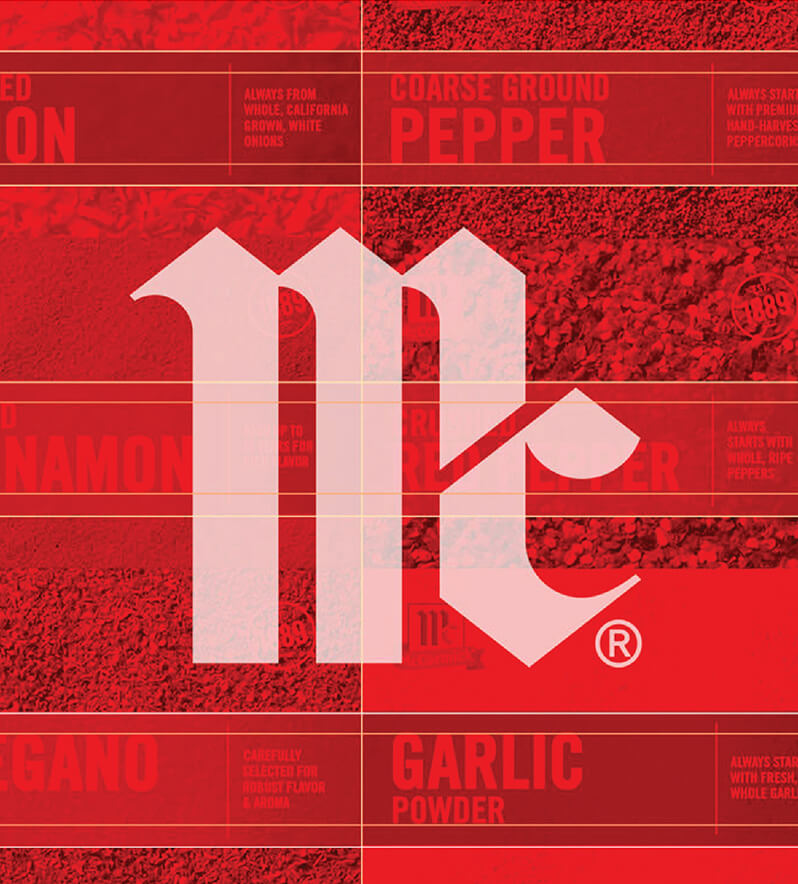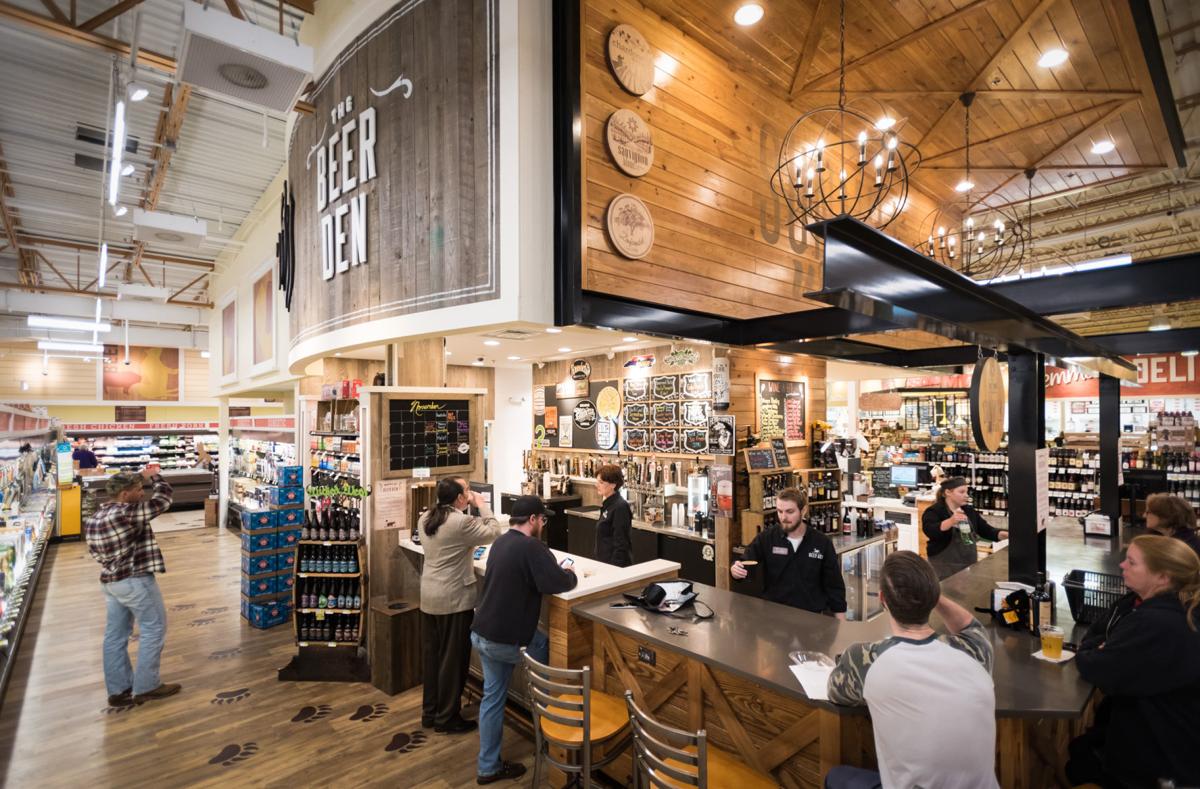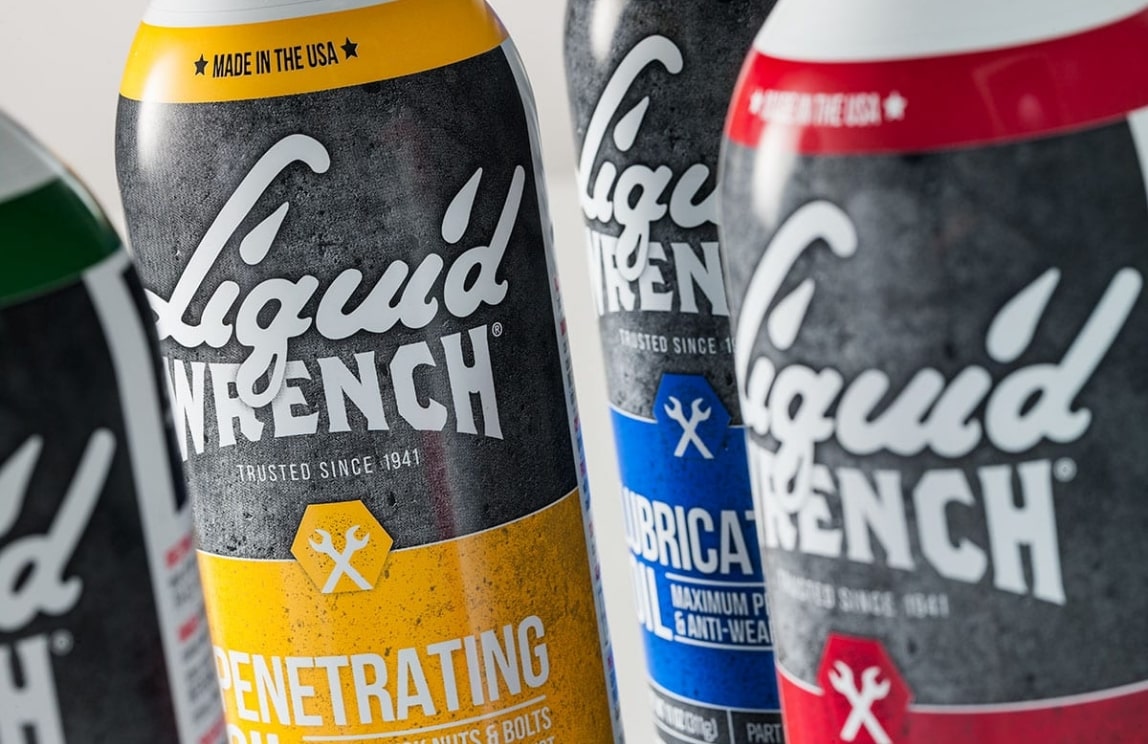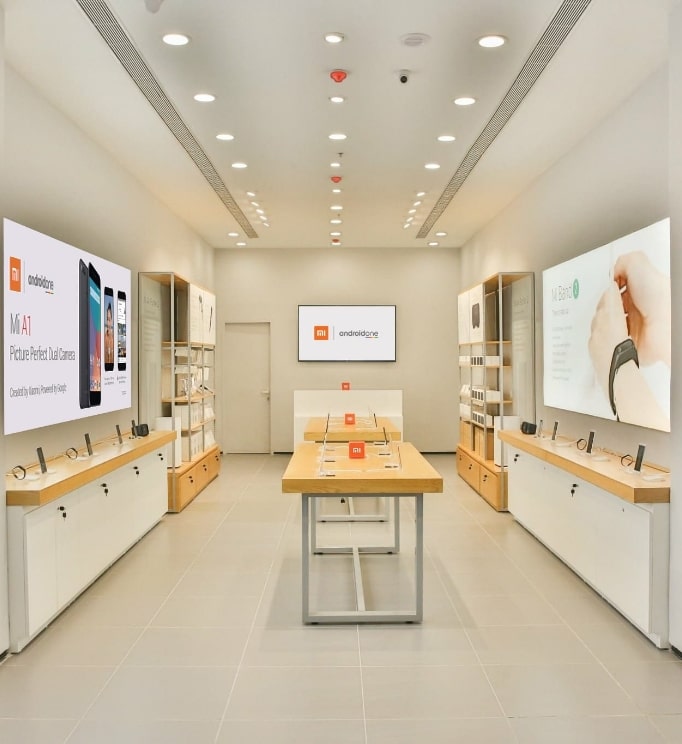Positioning Powerhouses: Learning from the Best
Want to create a brand position that resonates with your target audience and fuels growth? Strong brand positioning differentiates you, builds loyalty, and drives sales. This listicle showcases seven brand positioning examples, including Apple’s premium approach and Volvo’s safety focus. By examining these diverse strategies, from Coca-Cola’s happiness positioning to Patagonia’s environmental activism, you’ll learn how to craft a compelling brand position for your own products and services. Discover how these companies achieved market dominance through effective brand positioning.
1. Apple’s Premium Positioning
Apple provides one of the most compelling brand positioning examples, consistently demonstrating the power of a premium strategy. This approach establishes a brand as superior in quality, innovation, and design, justifying higher prices and cultivating strong customer loyalty. Apple positions itself as a purveyor of high-quality, innovative technology offering a seamless user experience, wrapped in elegant design. Their strategy revolves around simplicity, leading-edge technology, and an aspirational lifestyle, making their products not just gadgets, but symbols of status and belonging.
Several key features contribute to Apple’s premium positioning: a relentless focus on design and aesthetic appeal, prioritizing user experience over complex technical specifications, a premium pricing strategy that reinforces exclusivity, and a tightly integrated ecosystem across its product line. This allows for a seamless transition between devices, further enhancing the overall user experience.
This premium positioning offers several advantages. It fosters intense brand loyalty and high customer retention rates, translating into significant profit margins. Furthermore, it clearly differentiates Apple from competitors in a crowded marketplace and allows for a consistent marketing message across all customer touchpoints. For brand directors, marketing managers, and CMOs, understanding this model offers valuable insights into crafting a compelling brand narrative. You can learn more about Apple’s Premium Positioning.
However, this approach is not without its drawbacks. The premium pricing strategy naturally excludes price-sensitive market segments. The high expectations cultivated by the brand’s premium image necessitate consistent delivery on quality and innovation. Any slip-up can significantly damage the brand’s reputation. Finally, maintaining this leading-edge position demands continuous investment in research and development to drive constant innovation.
Apple’s success is replete with examples of this premium positioning in action. The iconic ‘Think Different’ campaign brilliantly positioned Apple products as tools for creative professionals, fostering a sense of community and shared values. The meticulously designed Apple Store retail experience reinforces this premium positioning, offering a hands-on, immersive experience that goes beyond a simple point of sale. Furthermore, Apple product launches are treated as major cultural events, generating significant buzz and anticipation. Even the minimalist product design and packaging contribute to the overall perception of premium quality.
For brands seeking to emulate Apple’s success, several key takeaways emerge. Firstly, ensure that product quality aligns perfectly with the premium positioning. Inconsistency can quickly erode consumer trust. Maintain a consistent brand experience across all customer touchpoints, from online interactions to in-store experiences. Investing in exceptional customer service is crucial to support the premium image, as is focusing marketing efforts on the emotional benefits and lifestyle associated with the brand rather than simply highlighting technical features. Apple’s success, driven by visionaries like Steve Jobs, Jonathan Ive, and Tim Cook, provides a powerful brand positioning example for any industry. It showcases how a consistent, meticulously crafted premium strategy can create a brand that resonates deeply with consumers and commands market leadership.
2. Volvo’s Safety-First Positioning
Volvo’s brand positioning is a prime example of how focusing on a single, compelling benefit can create a powerful and lasting brand identity. For decades, Volvo has consistently positioned itself as the safest automotive choice, weaving safety into every fiber of its brand, from product development and engineering to marketing and advertising. This unwavering commitment has not only differentiated Volvo in a competitive market but has also resonated deeply with a specific consumer segment: those prioritizing the safety of themselves and their families. This singular focus makes Volvo a powerful case study in successful brand positioning examples.

This safety-first positioning permeates every aspect of Volvo’s operations. Safety innovations are at the core of their product development. Their marketing consistently emphasizes safety messaging, often portraying scenarios where Volvo vehicles protect occupants in hazardous situations. Even their engineering priorities place safety above other features, sometimes at the expense of performance or aesthetics. This dedication to safety is further reinforced by a design philosophy that prioritizes protecting passengers and pedestrians.
Examples of Volvo’s commitment to safety are numerous and well-documented. Their invention of the three-point safety belt in 1959, which they then made available to all manufacturers, solidified their position as safety pioneers. Their Vision 2020 initiative, which aimed to eliminate deaths and serious injuries in new Volvo cars by 2020, further demonstrated this commitment. Advertising campaigns frequently depict families protected within Volvo vehicles, reinforcing the association between the brand and the safety of loved ones. Finally, public crash test demonstrations visually showcase the superior safety features of their vehicles.
Pros of Volvo’s Safety-First Positioning:
- Clear and Focused: The positioning is easily understood by consumers.
- Ownership of a Category Benefit: Volvo effectively owns “safety” in the automotive sector.
- Strong Differentiation: In a crowded market, this provides a unique selling proposition.
- Appeals to a Specific Segment: Resonates strongly with family-oriented consumers.
Cons of Volvo’s Safety-First Positioning:
- Limited Appeal: May not appeal to performance-oriented car buyers.
- Risk of Appearing Dated: The focus on safety could be perceived as boring or unexciting.
- Diminishing Differentiation: As other manufacturers improve safety features, Volvo’s advantage is reduced.
Tips for Implementing a Similar Positioning Strategy:
- Identify an Underserved Need: Find a crucial, yet underserved, consumer need that your brand can own.
- Tangible Proof: Back up your positioning claims with demonstrable product features and benefits.
- Long-Term Consistency: Maintain consistent messaging over time to build and reinforce the association.
- Evolve and Adapt: Consider how to evolve your positioning to stay relevant while maintaining core brand associations.
When to Use This Approach:
This type of focused positioning is particularly effective when targeting a specific consumer segment with a strong, identifiable need. It works well in industries where differentiation is challenging, and a clear, compelling benefit can cut through the noise. For a brand director at a beverage company, this might translate to positioning a new drink line around health and wellness, or for a marketing director at a retail chain, focusing on sustainability and ethical sourcing. A spirits brand manager could emphasize a handcrafted, small-batch approach. The key is to identify a genuine benefit that resonates with your target audience and commit to it wholeheartedly.
While Volvo is now owned by Geely, their commitment to safety remains a cornerstone of their brand identity. This steadfast dedication demonstrates the power of a well-defined and consistently executed brand positioning strategy. It’s a powerful lesson for any brand seeking to establish a strong and enduring presence in the market. While Volvo doesn’t have a single dedicated website for their safety initiatives, information can be found throughout their main website (www.volvocars.com) and various press releases.
3. Coca-Cola’s Happiness and Togetherness Positioning
Coca-Cola offers a prime brand positioning example, demonstrating the power of emotional connection. Instead of focusing on the product itself, Coca-Cola has masterfully positioned its brand as a symbol of happiness, togetherness, and shared experiences. This strategy transcends the mere functional benefits of a sugary beverage and taps into universal human desires for joy and connection. This emotional positioning elevates Coca-Cola from a simple soft drink to a cultural icon, ingrained in moments of celebration, family gatherings, and everyday life. This approach is a particularly strong brand positioning example because it creates a powerful, lasting impression.
This emotional branding is achieved through several key features. The consistent use of red, a color often associated with happiness and excitement, reinforces this feeling. Marketing campaigns consistently focus on shared experiences and togetherness, further solidifying the brand’s association with positive emotions. Importantly, while maintaining a consistent global message, the brand adapts its campaigns to resonate with local cultures, ensuring relevance and connection across diverse markets. This makes Coca-Cola a powerful brand positioning example for global brands seeking similar reach.
This strategy has numerous advantages. It creates a powerful emotional connection with consumers that goes far beyond the product’s tangible benefits. This universal appeal transcends cultural boundaries, making it a highly effective strategy in a globalized market. Furthermore, this deeply ingrained emotional connection makes Coca-Cola’s positioning incredibly difficult for competitors to replicate or challenge. It also provides significant flexibility for various marketing campaigns while maintaining a consistent core brand identity. A beverage brand director can learn much from this approach to building a brand that resonates deeply with consumers.
However, this emotionally-driven positioning also presents challenges. Coca-Cola is vulnerable to criticism regarding the health impacts of its sugary drinks. Maintaining authenticity in the face of growing consumer skepticism towards large corporations is an ongoing battle. The less product-focused approach may also struggle to address the increasing health consciousness of consumers.
Several examples demonstrate Coca-Cola’s successful implementation of this positioning. The “Share a Coke” personalized bottle campaign fostered a sense of personal connection and sharing. The “Open Happiness” global marketing platform promoted a message of optimism and joy. Perhaps most iconically, Coca-Cola’s long-standing association with Santa Claus has helped shape modern Christmas imagery, linking the brand with feelings of warmth, family, and holiday cheer. These examples provide concrete brand positioning examples for marketers to analyze and learn from.
For brands looking to emulate Coca-Cola’s success, consider these tips: Connect your brand to universal emotional truths. Use consistent visual identity elements to reinforce your positioning. Focus on how your product makes people feel, not just its functional attributes. Finally, create marketing campaigns that demonstrate your positioning through storytelling and experiences, rather than simply stating it. This approach is particularly relevant for a brand manager at a spirits brand or a CMO looking to elevate their brand beyond product features. This approach, pioneered by company figures like Roberto Goizueta and Asa Candler, continues to serve as a compelling brand positioning example for companies around the world.
4. Southwest Airlines’ Low-Cost, Fun Positioning
Southwest Airlines provides a compelling brand positioning example, demonstrating how a distinct brand identity can disrupt a commoditized industry. They’ve carved out a unique space by positioning themselves as the fun, friendly, and affordable alternative to traditional airlines. This resonates with a large segment of travelers who prioritize value and a positive experience over premium services. This approach allows Southwest to attract price-sensitive customers while also differentiating themselves through a unique brand personality.
This brand positioning is built on several key features: a no-frills service model that minimizes costs, an emphasis on friendly and often humorous customer service, transparent pricing with no hidden fees, and a carefully cultivated image as the airline for everyday people. This allows Southwest to make operational decisions, like open seating, that align with and reinforce its brand positioning, further emphasizing the casual and accessible nature of the airline.
Examples of Successful Implementation:
- Humorous Safety Announcements: These entertain passengers while delivering important information, reinforcing the “fun” aspect of the brand.
- LUV Ticker Symbol: A nod to the company’s origins at Love Field in Dallas, the ticker symbol itself broadcasts a message of affection and connection.
- Bags Fly Free Campaign: This campaign directly addressed a customer pain point created by competitor baggage fees, highlighting Southwest’s value proposition.
- Casual Uniforms and Relaxed Employee Policy: These reinforce the fun and approachable culture both internally and externally.
Pros:
- Clear Differentiation: Southwest stands apart from legacy carriers by offering a distinctly different experience.
- Broad Appeal: The brand attracts both budget-conscious travelers and those seeking a more pleasant, less stressful flying experience.
- Alignment of Operations and Brand: Operational decisions reinforce the brand promise, creating a cohesive customer experience.
- Customer Loyalty: The combination of value and positive experience fosters strong customer loyalty.
Cons:
- Limited Appeal to Certain Segments: The no-frills approach may not attract business or luxury travelers.
- Maintaining Culture at Scale: Preserving a friendly and fun culture can be challenging as the company grows.
- Pricing Constraints: The low-cost positioning can make it difficult to raise prices when needed.
Tips for Applying This Approach:
- Authenticity is Key: Your company culture must genuinely support your brand positioning. It needs to be lived, not just advertised.
- Operational Alignment: Consider how operational decisions can reinforce your brand promise.
- Identify Customer Pain Points: Look for areas where competitors are falling short and turn those into opportunities for differentiation.
- Empower Your Employees: Train employees to embody your brand positioning in every customer interaction.
When and Why to Use This Approach:
This brand positioning strategy is particularly effective in industries perceived as commoditized, where price competition is fierce. By adding a strong layer of brand personality and focusing on a specific customer segment, companies can differentiate themselves on more than just price. For brands targeting value-conscious consumers who also desire a positive experience, the Southwest model offers a powerful roadmap. This approach requires a commitment to building a strong internal culture that supports the brand promise and empowers employees to deliver on it consistently. While Southwest doesn’t have a dedicated brand positioning page on its website, its brand is evident throughout its online presence and customer interactions. (www.southwest.com) This example deserves its place on this list because it showcases the power of creating a distinctive brand experience in a crowded marketplace, generating customer loyalty and sustained success. This is especially relevant for Brand Directors, Marketing Directors, and CMOs seeking to establish a strong and differentiated brand presence.
5. Patagonia’s Environmental Activism Positioning
Patagonia stands as a prime brand positioning example, demonstrating how a company can weave its core values into the very fabric of its business model. This approach, known as environmental activism positioning, centers a brand’s identity around a commitment to environmental responsibility and sustainability. It’s not just about selling products; it’s about embodying a set of values that resonate deeply with a specific target audience. This strategy transcends traditional marketing and transforms the brand into a movement, attracting customers who become passionate advocates. For brand directors, marketing managers, and CMOs seeking to differentiate their brand in a crowded marketplace, Patagonia’s approach offers valuable insights.
Patagonia’s success hinges on several key features: environmental responsibility at the core of its business model, transparent supply chain and manufacturing processes, anti-consumerist messaging (famously demonstrated by their “Don’t Buy This Jacket” campaign), and a commitment to donating a portion of profits to environmental causes. This positioning resonates powerfully with environmentally conscious consumers, fostering deep loyalty based on shared values.
This method works by aligning the entire business operation with the espoused environmental values. It’s not enough to simply say you’re environmentally friendly; every decision, from sourcing materials to manufacturing processes and marketing campaigns, must reflect this commitment. This authenticity creates a powerful differentiator, difficult for competitors to replicate. It allows brands like Patagonia to position higher prices as an investment in quality and sustainability, rather than a premium.
Several examples highlight Patagonia’s commitment: their 1% for the Planet pledge, donating 1% of sales to environmental groups; the Worn Wear program, encouraging repair and reuse of garments; and the company’s active involvement in environmental policy and public lands protection. Perhaps the most striking example is founder Yvon Chouinard’s decision to give away the company to fight climate change. These actions demonstrate a genuine commitment to environmental activism, far exceeding superficial marketing tactics.
While highly effective, this approach has its challenges. It inherently limits market size to environmentally conscious consumers. It also places the company under intense scrutiny, holding it to a higher standard regarding its business practices. Furthermore, taking a political stance, such as advocating for specific environmental policies, can alienate some potential customers. Finally, balancing growth with anti-consumerist messaging presents an ongoing challenge.
Pros:
- Attracts like-minded customers who become brand advocates
- Builds deep loyalty based on shared values
- Creates authentic differentiation difficult for competitors to copy
- Positions high prices as investment in quality and sustainability
Cons:
- Limits market size to environmentally conscious consumers
- Held to higher standard with more scrutiny of business practices
- Political positioning can alienate some potential customers
- Challenges in balancing growth with anti-consumerist messaging
Tips for implementing this brand positioning example:
- Ensure company operations authentically align with positioning: Hypocrisy will be quickly exposed.
- Be prepared to take stands that might be controversial but align with core values: Authenticity requires conviction.
- Consider how every business decision reflects on your positioning: From packaging to partnerships, every choice matters.
- Build community around shared values beyond just selling products: Foster a sense of belonging and shared purpose.
Patagonia’s Environmental Activism Positioning deserves its place on this list because it exemplifies how a company can successfully build a brand around a powerful set of values. It demonstrates that profits and purpose can coexist, and that taking a stand can be a powerful differentiator in a crowded marketplace. Learn more about Patagonia’s Environmental Activism Positioning. This approach is particularly relevant for brands targeting younger demographics who are increasingly driven by values and seeking brands that align with their worldview. While not every company can or should become an environmental activist brand, Patagonia provides a powerful brand positioning example showcasing the potential of values-driven marketing. This example provides valuable insights for anyone working in brand management, from beverage brand directors to CMOs in retail. It demonstrates the power of authenticity, the importance of aligning actions with words, and the potential of building a brand that stands for something more than just profit.
6. Tesla’s Innovative Disruptor Positioning
Tesla’s brand positioning serves as a prime example of how to disrupt an established market by focusing on innovation and challenging conventional wisdom. Instead of positioning itself as simply another car manufacturer, Tesla has successfully established itself as a revolutionary technology company that happens to make electric vehicles. This innovative disruptor positioning resonates strongly with a target audience seeking cutting-edge technology and a forward-thinking vision. For brand directors, marketing managers, and CMOs across various industries, understanding Tesla’s approach can offer valuable insights for their own brand positioning strategies.
This method centers on emphasizing technological leadership and a commitment to disrupting established industries. This appeals not only to environmentally conscious consumers but also, and more importantly, to early adopters and tech enthusiasts who value innovation and progress. Instead of competing head-to-head with traditional automotive brands on features like horsepower or fuel efficiency, Tesla redefined the competitive landscape by focusing on aspects like software updates, autonomous driving capabilities, and a seamless digital experience.
Several key features contribute to Tesla’s disruptive positioning: a focus on technological innovation over traditional automotive values; a direct-to-consumer sales model bypassing dealerships, which allows for greater control over the customer experience; positioning electric vehicles as superior, not just eco-friendly alternatives; and expanding into adjacent markets like solar power and energy storage, further solidifying its image as a technology innovator. This multi-faceted approach creates a powerful brand narrative that transcends the automotive industry.
Examples of Tesla’s successful implementation:
- Over-the-air software updates: This positions Tesla vehicles as constantly evolving technology platforms, more akin to smartphones than traditional cars.
- Autopilot features: These advanced driver-assistance systems showcase Tesla’s commitment to the future of autonomous driving and reinforce its image as a leader in automotive technology.
- Cybertruck’s radical design: This unconventional design breaks all established pickup truck conventions and further cements Tesla’s reputation for pushing boundaries.
- Product launches presented as tech events: Instead of traditional car reveals, Tesla unveils its products as tech events, drawing a parallel to companies like Apple and further emphasizing the technological aspect of its vehicles.
Pros of this approach:
- Appeals strongly to innovation-seeking consumers.
- Creates a perception of category leadership.
- Justifies premium pricing as an investment in the latest technology.
- Attracts top talent interested in disruptive innovation.
Cons to consider:
- Creates high expectations for continuous breakthrough innovation.
- Presents challenges with scaling production while maintaining quality.
- Leaves Tesla vulnerable to established manufacturers catching up technologically.
- Demonstrates a reliance on charismatic leadership (Elon Musk).
Tips for implementing a similar strategy:
- Identify industry conventions that can be challenged: What are the unspoken rules in your industry, and how can you disrupt them?
- Focus messaging on category creation rather than category competition: Don’t just try to be better than the competition; strive to create a new category altogether.
- Build a community of early adopters who become brand evangelists: These early adopters will be crucial in spreading the word about your innovative product or service.
- Frame limitations as stepping stones on the innovation journey: Transparency about challenges can build trust and reinforce your commitment to continuous improvement.
Tesla’s success is largely attributed to figures like Elon Musk, JB Straubel (co-founder), and Franz von Holzhausen (chief designer). Learn more about Tesla’s Innovative Disruptor Positioning to understand how their vision has shaped the company’s trajectory.
This brand positioning example deserves its place on this list because it demonstrates how a company can successfully redefine a market by focusing on innovation and challenging conventional thinking. Tesla’s focus on technology, direct-to-consumer sales, and expansion into adjacent markets creates a compelling narrative that resonates with a specific target audience and sets it apart from traditional automotive manufacturers. By understanding Tesla’s approach, brand directors and marketing leaders can gain valuable insights into how to disrupt their own industries and create truly innovative brand experiences.
7. TOMS’ One-for-One Social Good Positioning
TOMS’ One-for-One model stands as a prominent brand positioning example, demonstrating how integrating social good can differentiate a brand and resonate with consumers. This approach weaves a charitable mission directly into the business model, making the purchase of a product also an act of giving. This makes TOMS a compelling case study for anyone seeking brand positioning examples, especially those considering a purpose-driven approach. For brand directors, marketing managers, and CMOs, understanding the nuances of this strategy is crucial for navigating the evolving landscape of consumer expectations.
How it Works:
The One-for-One model, pioneered by TOMS, is built on a simple premise: for every product purchased, a similar item or service is donated to someone in need. This straightforward proposition creates a tangible link between consumer action and positive social impact. Initially focused on shoes, TOMS expanded the model to eyewear (purchases funding sight-saving surgeries), coffee (TOMS Roasting Co. providing clean water), and later evolved into a more comprehensive impact giving model.
Examples of Successful Implementation:
- Original One-for-One: The purchase of a pair of TOMS shoes resulted in a pair being donated to a child in need. This simple, easily understood model established the brand’s identity.
- TOMS Eyewear: Expanding beyond footwear, TOMS applied the model to eyewear, with purchases funding sight-saving surgeries. This demonstrated the model’s adaptability to different product categories.
- TOMS Roasting Co.: This venture linked coffee purchases to the provision of clean water, further diversifying the One-for-One concept.
Actionable Tips for Readers:
- Genuine Impact: Ensure your giving model genuinely addresses a need and isn’t just a marketing ploy. Thoroughly research the issue and partner with effective organizations.
- Tangible Connection: Make the social impact tangible and easy for consumers to understand. Clearly communicate how their purchase contributes to the cause.
- Evolving Consciousness: Social consciousness is constantly evolving. Consider how to adapt and improve your model to remain relevant and impactful.
- Balanced Messaging: While highlighting the social mission is crucial, don’t neglect product quality and features. Consumers need to be satisfied with the product itself, not just the associated good deed.
When and Why to Use This Approach:
This brand positioning strategy is particularly effective for brands targeting socially conscious consumers. It’s a strong choice when:
- Your target audience values ethical and sustainable practices.
- You want to differentiate your brand in a crowded marketplace.
- You’re looking to build a strong emotional connection with consumers.
- You want to attract and retain purpose-driven employees.
Pros:
- Provides consumers with a tangible sense of social impact from their purchases.
- Creates an emotional connection that transcends product functionality.
- Offers clear differentiation in a competitive landscape.
- Attracts socially conscious consumers and employees.
Cons:
- Business model can face sustainability challenges if product appeal declines.
- Potential for criticisms of a ‘white savior’ approach to charity.
- Questions may arise about the actual effectiveness of the giving model.
- The model can be difficult to adapt as social consciousness evolves.
Popularized By:
- Blake Mycoskie (founder of TOMS)
- The TOMS brand story, widely featured in case studies
- Companies that adopted similar models, such as Warby Parker and Bombas
This example deserves its place on the list of brand positioning examples because it showcases the power of integrating social good into the core business model. While TOMS has faced challenges and criticism, its One-for-One model undeniably shifted the landscape of brand positioning and inspired countless other companies to explore purpose-driven strategies. For brand directors, marketing managers, CMOs, and anyone else involved in brand strategy, TOMS offers valuable lessons in connecting with consumers on a deeper level and building a brand that stands for something more than just profit.
7 Brand Positioning Examples Compared
| Positioning | 🔄 Implementation Complexity | 💡 Key Advantages | ⚡ Resource Requirements | 📊 Expected Outcomes | ⭐ Ideal Use Cases |
|---|---|---|---|---|---|
| Apple’s Premium Positioning | High — requires continuous innovation and quality control | Strong brand loyalty, high profit margins, clear differentiation | Significant investment in design, R&D, marketing | Premium pricing, aspirational brand image | Companies targeting high-end, design-conscious consumers |
| Volvo’s Safety-First Positioning | Moderate — focused product development and long-term consistency | Clear, focused safety leadership, strong family appeal | Investment in safety engineering and messaging | Strong category ownership, trusted brand safety | Brands emphasizing reliability and safety as core values |
| Coca-Cola’s Happiness Positioning | Moderate — emotional branding with consistent global marketing | Deep emotional connection, universal cultural appeal | Continuous creative marketing and brand management | High brand recall, emotional loyalty | Products/services aiming for emotional and cultural connection |
| Southwest Airlines’ Low-Cost Fun | Moderate — streamlined operations aligned with brand promise | Clear low-cost differentiation, customer loyalty | Efficient operational management, training | Competitive pricing with positive experience | Cost-conscious markets valuing friendly, casual service |
| Patagonia’s Environmental Activism | High — requires authentic business alignment and activism | Deep loyalty through shared values, authentic differentiation | Investment in sustainable practices, activism | Strong brand advocacy, premium pricing justified | Brands rooted in sustainability and social responsibility |
| Tesla’s Innovative Disruptor | High — continuous breakthrough innovation and tech focus | Perceived category leadership, attracts tech enthusiasts | Heavy R&D, advanced tech, charismatic leadership | Premium pricing, tech-driven market disruption | Innovation-driven industries and early adopter markets |
| TOMS’ One-for-One Social Good | Moderate — integrates social mission with business model | Emotional connection, clear social impact differentiation | Structured charitable partnerships, storytelling | Enhanced brand purpose, appeal to socially conscious consumers | Social enterprises and purpose-driven brands |
Crafting Your Own Winning Position
From Apple’s premium appeal to TOMS’ social impact, these brand positioning examples demonstrate the power of a clearly defined brand strategy. The key takeaway is that effective positioning requires a deep understanding of your target audience, a compelling differentiation strategy, and consistent communication across all touchpoints. Whether it’s emphasizing innovation like Tesla, focusing on value like Southwest Airlines, or championing a cause like Patagonia, each brand has carved a unique space in the market by consistently delivering on its core promise. Mastering these concepts is paramount, as a strong brand position not only attracts and retains customers, but also drives brand loyalty, commands premium pricing, and ultimately fuels sustainable business growth.
For B2B companies, choosing the right positioning strategy is crucial for standing out in a competitive market. A resource like “8 Types of Positioning Strategies for B2B Products” from Big Moves Marketing can provide further insights into tailoring your approach.
These brand positioning examples provide a blueprint for success, reminding us that building a strong brand isn’t just about what you sell – it’s about what you stand for. Now, it’s your turn to craft a winning position that resonates with your audience and elevates your brand above the competition. Ready to build an unforgettable brand? Theory House specializes in developing powerful brand positioning strategies that drive results. Partner with us to define and implement a winning strategy that transforms consumer passion into purchase and builds enduring brand equity.




